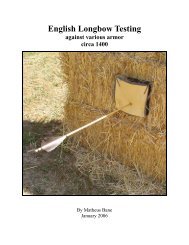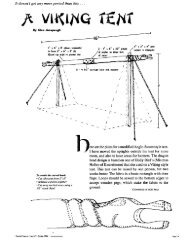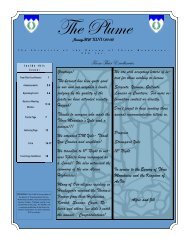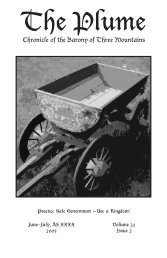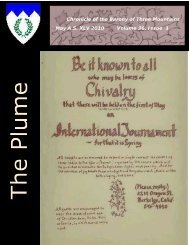The Kiev Psalter of 1397: An Analysis - CurrentMiddleAges.org
The Kiev Psalter of 1397: An Analysis - CurrentMiddleAges.org
The Kiev Psalter of 1397: An Analysis - CurrentMiddleAges.org
You also want an ePaper? Increase the reach of your titles
YUMPU automatically turns print PDFs into web optimized ePapers that Google loves.
in the <strong>Kiev</strong> <strong>Psalter</strong> suggests the Moscow origin <strong>of</strong> its scribe. 13 Records indicate that<br />
Metropolitan Cyprian and Bishop Mikhail spent one and a half years together in <strong>Kiev</strong> in<br />
1396-7. Spyridon must have been with them while working on Bishop Mikhail’s <strong>Psalter</strong>.<br />
<strong>The</strong> bishop was a monk in the Moscow Monastery in the 1370’s, but became the Bishop<br />
<strong>of</strong> Smolensk in 1383. Shortly after becoming bishop, it appears that he was sent on<br />
several diplomatic missions to Moscow, Constantinople and finally <strong>Kiev</strong>. <strong>The</strong> records at<br />
the Monastery <strong>of</strong> the Trinity near Moscow indicate that he died at the monastery and was<br />
buried there. 14 According to Vzdornov, Russian colophons do not typically indicate the<br />
place <strong>of</strong> composition unless there is something unusual, for example, if the scribe is away<br />
from home during production. 15 This would seem to be consistent with the church<br />
documents analyzed by Vzdornov and others in regards to the making <strong>of</strong> the <strong>Kiev</strong> <strong>Psalter</strong>.<br />
As mentioned above, the <strong>Psalter</strong>’s history is unknown from the date indicated by<br />
the colophon until the second date, 1518, when Abraham Hlebicky donated it to the<br />
Church <strong>of</strong> St Nicholas. It appears that the <strong>Kiev</strong> <strong>Psalter</strong> remained in the church’s library<br />
for some time. It was re-discovered in the 1820’s by a pr<strong>of</strong>essor from the University <strong>of</strong><br />
Vilno, and a “prominent figure in the Greco-Uniate Church <strong>of</strong> Lithuania”, who made its<br />
discovery public. 16 Several collectors attempted to acquire the manuscript, but it was not<br />
put up for sale until a new dean arrived at the church in 1828. Dean M.K. Bobrowski<br />
sold the <strong>Psalter</strong> to a bibliophile named W. Trebicky in 1847. In 1861, Trebicky willed it<br />
to Count A.S. Zamoyski <strong>of</strong> Warsaw. However, the manuscript did not remain in Warsaw<br />
long, somewhere between 1874 and 1881 it appeared in the possession <strong>of</strong> Prince P.P.<br />
Vyazemsky <strong>of</strong> Petersburg who finally sold it to Count S.D Sheremetev, one <strong>of</strong> the<br />
founders <strong>of</strong> the Society <strong>of</strong> Amateurs <strong>of</strong> <strong>An</strong>cient Texts and Art. <strong>The</strong> count housed the<br />
society’s museum in his palace in Petersburg and in 1881 the <strong>Kiev</strong> <strong>Psalter</strong> joined that<br />
collection. When the entire collection passed to the Leningrad Public Library in 1932,<br />
the manuscript was unbound into gatherings, which were then cleaned and flattened. 17<br />
Within decades <strong>of</strong> being discovered, the manuscript was already the subject <strong>of</strong><br />
considerable analysis. Most <strong>of</strong> the published works were done in the late nineteenth<br />
century in Polish, Lithuanian and Russian and unfortunately are not available in<br />
13 ibid., 148.<br />
14 ibid., 149.<br />
15 ibid.<br />
16 ibid., 148.<br />
17 ibid.<br />
3





